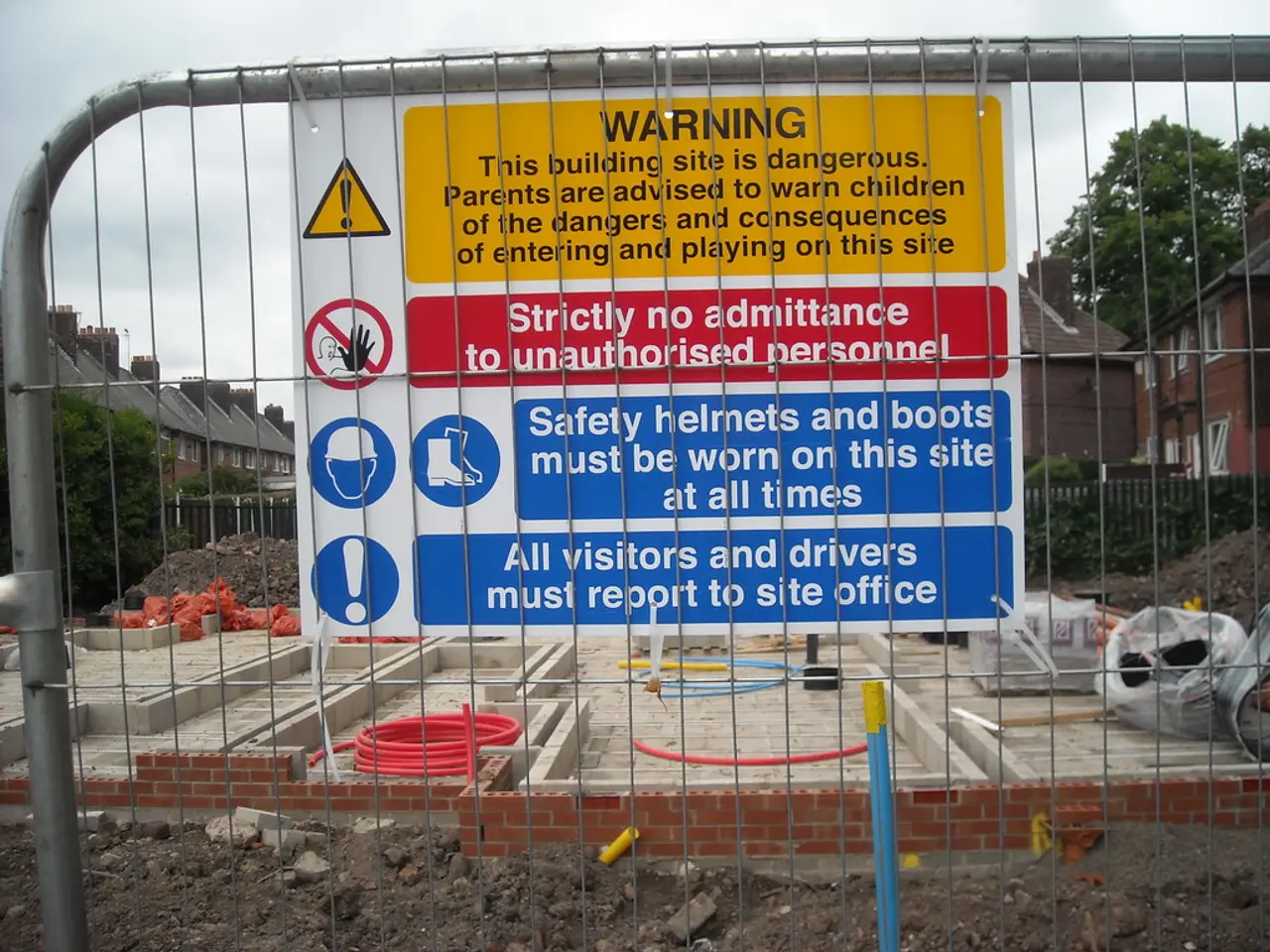Discussing Key Perils in Insurance That Building Contractors Should Address with Their Brokers
============================================================
In the dynamic world of construction, understanding and managing risks is crucial for both project success and financial stability. Construction brokers play a vital role in ensuring their clients have comprehensive insurance coverage tailored to their specific needs and risks. Here are some key topics that brokers should discuss with their construction clients:
Understanding the Scope of Operations and Project Types
Brokers must grasp the full extent of their client's construction activities, whether they specialise in general building, civil engineering, mechanical and electrical (M&E), or finishing contractors. Each discipline brings unique risks and regulatory considerations. The types of projects (residential, commercial, or infrastructure) and contract structures (fixed-price, cost-plus, novation) also impact the risk profile and insurance requirements. Subcontractor use and management should be detailed, as this affects liability and coverage needs.
Professional Designs and Related Liability
If the client provides professional design or engineering services, professional liability (errors and omissions) insurance is essential to protect against design-related claims. Brokers should ensure clients have suitable professional liability coverage as part of their package to address these exposures.
Contractual Requirements
Construction contracts often specify mandatory insurance limits, additional insured endorsements, and waivers of subrogation. Brokers need to review contract terms thoroughly to ensure policies comply with client obligations. Features like Blanket Additional Insured endorsements and Waivers of Subrogation should be discussed, as these are commonly required and streamline compliance without additional fees.
Plant, Machinery, and Equipment Risks
Coverage should include protection for tools, machinery, and equipment (both owned and hired), as well as materials in transit or under installation. Including these in the insurance package addresses risks of loss, theft, or damage to essential operational assets on site.
Risk Management and Business Continuity
Brokers should emphasise the importance of risk control measures to reduce loss frequency and severity. This includes discussing specific risks like heat stress injury prevention in certain environments. Business continuity planning and coverage to protect against project delays or operational shutdowns due to insured losses should be addressed to maintain financial stability.
Ongoing Policy Management
Beyond placement, brokers should offer continuous review and advisory services regarding coverage adequacy, market conditions, emerging risks, claims advocacy, and policy endorsements. This ensures evolving project and business needs are met proactively.
Additional Considerations
The existence and type of energy sources on a construction site are important factors to consider for both liability and property cover. Design-specific firms should consider professional indemnity (PI) exposures and the need for cover. Traffic management and public access are on-site exposures that need to be considered for both liability and property cover.
Contract works extensions may include advance loss of profits or delay in start-up (DSU) cover to handle unforeseen events that can impact timelines. Contract works extensions can protect against a variety of financial risks associated with construction projects.
Understanding the likelihood and impact of subcontractors becoming insolvent is important. Contractual requirements and third-party obligations, such as named insurers, minimum limits, and joint insureds or interested parties, are important to discuss. All-risk equipment cover is usually required as standard, but contractors may wish to limit this cover or take out third-party cover to save costs.
In summary, brokers must have detailed, tailored discussions addressing the client's operational scope, project types, professional liability, contract insurance mandates, equipment exposures, and risk management to build a comprehensive insurance solution that supports both risk protection and business continuity for construction clients.
1.In the fast-evolving insurtech landscape, it is essential for brokers to offer continuous review and advisory services on reinsurance opportunities, as these can provide financial stability and manage risks in construction projects, ensuring business continuity.2.Given the diverse risks associated with construction projects, brokers should keep themselves updated on industry events and emerging trends (such as the increasing interconnection between Internet of Things devices and construction processes) to better advise their clients on effective risk management strategies and appropriate insurance solutions.3.As more construction businesses shift towards adopting sustainable energy sources, brokers must continuously provide their clients with information on the implications of these choices for their finance and insurance needs, offering comprehensive options that encompass renewable energy-related risks and opportunities in our increasingly eco-conscious world.








